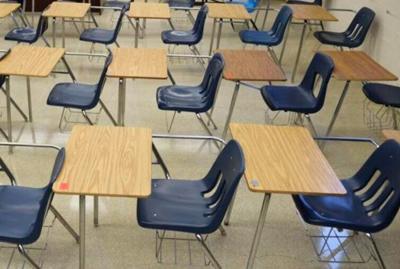A new federal grant is directing $13.2 million to three Baton Rouge Parish schools over the next five years in a bid to increase socioeconomic and racial diversity at those sites.
The award , the East Baton Rouge Parish School Board , and the money has already started flowing. The award for Year 1 is $2.8 million.
The funding will benefit Twin Oaks Elementary, 819 Trammell Drive; Glasgow Middle, 1676 Glasgow Ave.; and Broadmoor High, 10100 Goodwood Blvd. The schools are filled with students who qualify for public assistance, ranging from 69% at Glasgow to 88% at Twin Oaks. The schools also have many Hispanic students, ranging from 10% at Glasgow to 26% at Twin Oaks.
The school system is clustering the schools. So a student who starts at Twin Oaks will be able to advance to Glasgow Middle and finally to Broadmoor High, a distance of nearly seven miles. The three schools, however, will retain their traditional attendance zones.
The cluster is modeled on the schoolâs magnet program, which in 2004 established a series of feeder schools to Baton Rouge Magnet High where students have the best shot in gaining admittance to the districtâs flagship high school. That cluster âhas effectively recruited students from diverse socioeconomic backgrounds, ensuring that no student's educational opportunities are hindered by their economic circumstances,â according to the districtâs 331-page grant application.
The new federal grant, however, involves more than just clustering schools. It aims to outfit those three schools with the ingredients for a âholistic educationâ and to speed the development of their students by adding specialized school services and outside partnerships, as well as increased physical education and extracurricular activities.
Pursuant to the grant, Twin Oaks Elementary, Glasgow Middle and Broadmoor High will add three new staff members: a community service specialist, an instruction specialist, and an instructional technology specialist.
âThis is a substantial investment in these schools,â said Theresa Porter, executive director for innovation for the school system.
The new federal grant is called the Fostering Diverse Schools Demonstration Program. The only other recipients this year are the Anchorage, Alaska, school district and the nationâs largest school district, New York City Public Schools, which was awarded twice. Ten more school districts won planning grants to develop programs for the future.
The new program draws on years of research on the success of schools that attract students from diverse backgrounds.
The same day that the U.S. Department of Education announced the diverse schools grant, of the better known Magnet Schools Assistance Program grant, or MSAP. Among those winners are St. Martin and Tangipahoa parishes. Those two Louisiana school districts over five years will receive $13.3 million and $15 million, respectively.
East Baton Rouge Parish received a five-year $15 million MSAP grant in 2017 and recently  â Broadmoor Elementary, the former Broadmoor Middle, McKinley Elementary and McKinley High â but fell short this round. Federal officials, however, have informed the school system that it remains in the running to potentially receive an MSAP grant next year.
To help Twin Oaks Elementary, Glasgow Middle and Broadmoor High, the school system is forging a variety of outside partnerships.
The grant application includes letters of commitment from several petrochemical companies that have agreed to help, including DuPont, Marathon, Nalco, Shell and ExxonMobil. Several entities will offer counseling services to families and support services for students. And LSU and Southern University are teaming up to develop and implement the diversity programs for each participating school.
The grant also calls for outreach to staff, parents and community members, and meetings at respective schools will be happening soon.
âEveryone in the school must be part of this to be successful,â Porter said.
The grants also will allow those schools to add to language-related services and help for Hispanic students and students who are not native English speakers, she said.
The federal grant program grew out of federal efforts to catch children up who fell behind during the pandemic. As part of that, the grant will pay for increased emphasis on traditional academic instruction, interventions tailored to specific students, but also a big focus on creating a supportive environment for students via expanded âwraparoundâ services,â Porter said.
âOur goal is to create services that are successful so we can replicate them at other schools,â she said.





